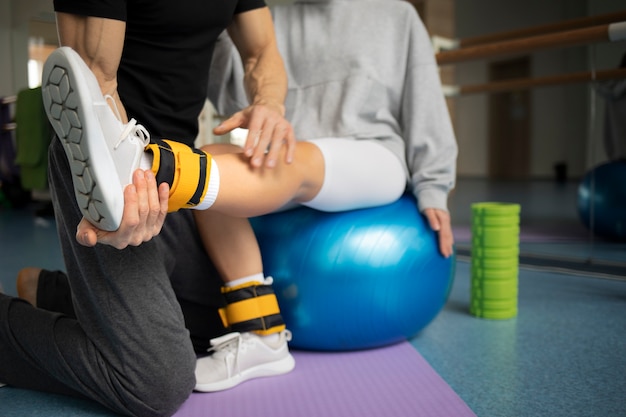Recovering from an injury as a teen can feel overwhelming—especially when you're eager to get back to sports, school, or daily life. Whether you're healing from a sprain, surgery, or chronic pain, a structured rehab plan makes all the difference. This complete rehab checklist is designed specifically for teens, with coach-style guidance, proper form notes, and easy modifications to keep you safe, motivated, and progressing.
Teens are not just small adults. Their bodies are still growing, and their recovery needs differ. Growth plates, hormonal changes, and high activity levels mean rehab must be both effective and safe. This guide breaks down rehab into manageable steps, focusing on consistency, correct technique, and confidence-building.

Never skip the warm-up. It prepares your muscles and joints for movement and reduces re-injury risk.
Coach Tip: Focus on smooth, controlled motions. If something hurts, slow down or stop.
Good form prevents setbacks. Use these simple cues during exercises:
Form Note: Record yourself or use a mirror to check alignment. Small tweaks make a big difference.

If full movements are too hard, use these beginner-friendly modifications:
Coach Tip: Progress only when the current level feels easy. Patience prevents setbacks.
Consistency beats intensity. Stick to your routine, even on tough days.
Flexibility supports recovery and prevents stiffness.
Form Note: Stretch to mild tension, never pain. Breathe deeply through each stretch.
Support healing with simple tools:

Pain is a signal. Distinguish between “good soreness” (muscle fatigue) and “bad pain” (sharp, joint-related, or increasing).
Rehab is as much mental as physical. Try these strategies:
Move to harder exercises only when:
If you experience swelling, persistent pain, or loss of motion, contact your rehab provider. Early intervention keeps recovery on track.
Rehab doesn’t have to be boring or intimidating. With the right approach, you can rebuild strength, improve movement, and return stronger than before. Use this checklist daily, stay consistent, and trust the process. Your future self will thank you.

Health

Health

Health

Health

Fitness

Health

Health

Wellness

Health

Fitness

Health

Health